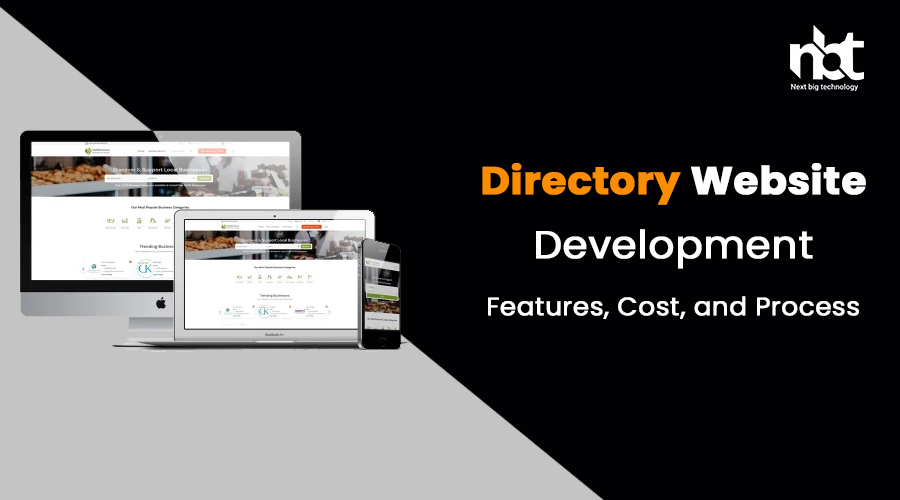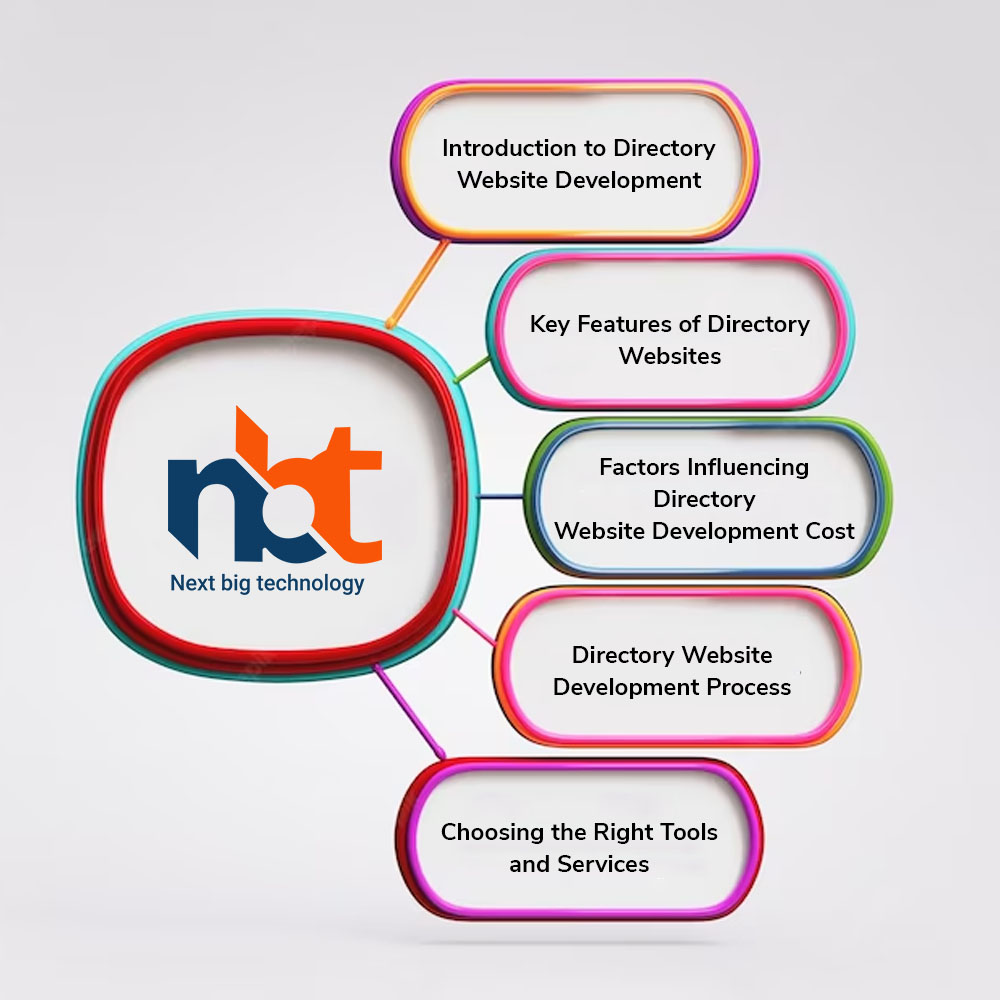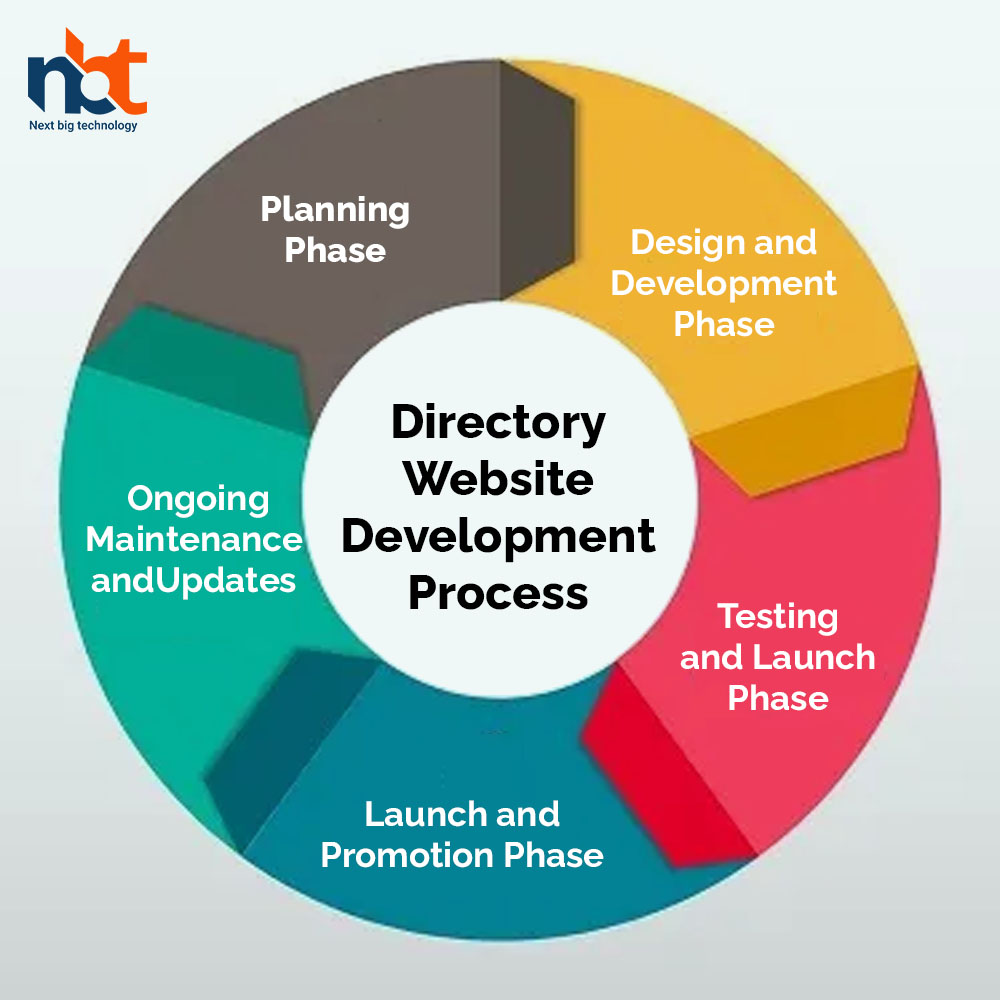Directory websites have evolved into essential platforms that provide valuable information and listings across various industries and niches. Whether it’s a local business directory, job listings, real estate, or any other niche, these platforms serve as centralized hubs for users seeking specific information. This comprehensive guide explores the key features, cost considerations, and step-by-step process involved in developing an effective and user-friendly directory website.
Table of Contents
Introduction to Directory Website Development
- Understanding Directory Websites: Defining the role of online platforms in aggregating and organizing information.
- Significance of Directory Websites: Offering convenient access to listings, businesses, services, and resources.
Key Features of Directory Websites
Listing Categories and Search:
- Categories and Subcategories: Organizing listings into a structured hierarchy for easy navigation.
- Search Functionality: Providing advanced search filters for precise results.
- Map Integration: Displaying listings on an interactive map for visual reference.
User Submission and Management:
- User Registration: Allowing users to create accounts for submitting and managing listings.
- Listing Submission: Enabling users to add their businesses or services to the directory.
- User Dashboard: Providing a personalized dashboard for managing listings, profiles, and reviews.
Reviews and Ratings:
- User Reviews: Allowing users to leave reviews and ratings for listed businesses.
- Review Management: Allowing business owners to respond to reviews and maintain their reputation.
- Rating Criteria: Implementing a rating system based on specific criteria (e.g., service quality, pricing).
Featured Listings and Advertising:
- Featured Listings: Offering premium placement for listings in search results.
- Advertising Space: Providing options for businesses to advertise on the platform.
- Promotional Offers: Creating space for showcasing special offers, deals, or discounts.
Contact Information and Interaction:
- Business Details: Displaying contact information, addresses, websites, and social media links.
- Contact Forms: Allowing users to contact businesses directly through the website.
- Click-to-Call: Enabling users to call businesses with a single click on mobile devices.
User-Friendly Design:
- Responsive Layout: Ensuring the website functions seamlessly on various devices.
- Intuitive Navigation: Designing a user-friendly interface for easy exploration.
- Fast Loading: Optimizing website speed and loading times for a positive user experience.
Factors Influencing Directory Website Development Cost
- Functionality and Complexity: The extent of features such as listing categories, search filters, and user submissions.
- Design and User Experience: Creating an intuitive interface for users and business owners.
- Content Volume: Developing a substantial amount of listings, categories, and user-generated content.
- Custom Development: Adding unique features or integrations specific to the directory’s focus.
- Monetization Strategy: Incorporating advertising options, premium listings, or subscription models.
- Mobile Responsiveness: Ensuring the website functions well on mobile devices.
- Ongoing Maintenance: Regular updates, security checks, and technical support.
Directory Website Development Process
1. Planning Phase
- Define Website Goals: Identify the primary purpose of the directory (e.g., local businesses, job listings).
- Listing Categories: Plan the categories and subcategories that will be featured.
- Monetization Strategy: Decide how the website will generate revenue (ads, premium listings).
- Technology Selection: Choose a content management system (CMS) or development platform.
2. Design and Development Phase
- User Experience Design: Design an intuitive interface that prioritizes search and listings.
- Listing Management System: Develop a system for users to submit, manage, and update listings.
- Review and Rating System: Integrate a user review and rating feature for listed businesses.
- Mobile Optimization: Ensure responsive design and optimal performance on mobile devices.
3. Testing and Launch Phase
- Quality Assurance: Test listing submission, search functionality, and user interactions.
- User Testing: Invite users to navigate the website and provide feedback on usability.
- Mobile Testing: Ensure optimal performance and layout on various mobile devices.
- Security Checks: Implement security measures to protect user data and prevent spam.
4. Launch and Promotion Phase
- Final Deployment: Upload the website to the chosen hosting server.
- Promotion Strategy: Advertise the website to potential users and businesses.
- User Engagement: Encourage businesses to claim their listings and engage with user reviews.
- Analytics Setup: Implement tracking tools to monitor website traffic, user engagement, and popular listings.
5. Ongoing Maintenance and Updates
- Regular Content Updates: Keep listings, categories, and search filters current.
- Technical Support: Address technical issues and user inquiries promptly.
- Performance Optimization: Regularly optimize website speed and loading times.
- Security Measures: Implement regular updates, security patches, and user data protection.
Choosing the Right Tools and Services
- Content Management Systems (CMS): Explore options like WordPress, Drupal, or custom directory platforms.
- Search and Filtering Plugins: Utilize plugins for advanced search functionality and filters.
- Review and Rating Plugins: Implement plugins for user-generated reviews and ratings.
- Advertising Integration: Consider tools for managing advertising space and premium listings.
- Analytics and Reporting Tools: Implement tools for tracking user engagement and popular listings.
Conclusion
Directory websites play a vital role in connecting users with valuable information and resources in various industries. The features you incorporate, the design complexity, and the ongoing maintenance efforts all contribute to the overall cost. By following a structured development process, leveraging appropriate tools, and focusing on user experience, you can create a dynamic online platform that serves as a reliable resource for users seeking listings, services, and businesses tailored to their needs.




















